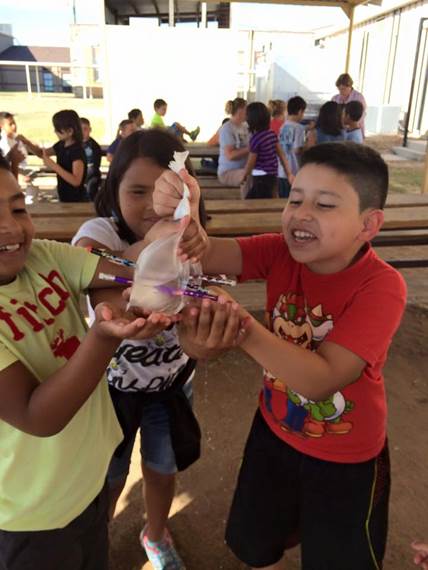21st CCLC: Changing what and how students learn
READ FULL STORY
21st CCLC: Changing what and how students learn
Of the 10.2 million students in afterschool programs, more than 1.6 million attend programs funded by 21st Century Community Learning Centers (21st CCLC), the only federal funding stream dedicated to supporting before school, afterschool and summer learning opportunities for children in low-income communities. With the reauthorization of the Elementary and Secondary Education Act on the horizon, policy makers are looking closely at federal investments and what differences those investments are making. Fortunately for children and families benefiting from 21st CCLC, there is a wealth of good news for policy makers to uncover about how 21st CCLC programs keep kids safe and healthy, inspire learning and help working families. As Karen Pittman, co-founder and CEO of the Forum for Youth Investment, and Charles Smith, executive director of the David P. Weikart Center for Youth Program Quality recently wrote, 21st CCLC is “the $1.2 billion program that changed America’s approach to afterschool.”
In a series of blogs, we’ll profile the efforts that are underway across the country to support quality in 21st CCLC. Below is the first in that series: a guest blog from Sonia Johnson, Oklahoma State Department of Education 21st CCLC coordinator. This example from Oklahoma nicely illustrates Pittman and Smith’s point that 21st CCLC is not just changing where and when students learn, but also what and how they learn.
 Throughout this school year, a group of 24 middle school students in Kingfisher, Oklahoma have been teaming up to design a spacesuit capable of protecting a high-altitude pilot or astronaut from the low-pressure environment of a vacuum. Through a NASA Space Challenge led by a highly qualified teaching staff, students have explored the Engineering Design Process, interacted with NASA scientists, investigated how the human body reacts in the vacuum of space and developed an understanding of the effects of a low-pressure environment on objects. All this took place after the school day ended.
Throughout this school year, a group of 24 middle school students in Kingfisher, Oklahoma have been teaming up to design a spacesuit capable of protecting a high-altitude pilot or astronaut from the low-pressure environment of a vacuum. Through a NASA Space Challenge led by a highly qualified teaching staff, students have explored the Engineering Design Process, interacted with NASA scientists, investigated how the human body reacts in the vacuum of space and developed an understanding of the effects of a low-pressure environment on objects. All this took place after the school day ended.
In Oklahoma, more than 16,000 students each year participate in 21st Century Community Learning Center (21st CCLC) programs like the one in Kingfisher. In 2014, 875 staff—primarily school-day teachers—stayed afterschool in Oklahoma to ensure student success. Programs were available in 60 school districts at 96 sites funded by 21st CCLC grants in partnership with 840 community partners.
The Oklahoma State Department of Education (OSDE) 21st CCLC program supports an environment of constant improvement in these programs through several layers of continuous evaluation and development.
 Since 2010, every grantee in Oklahoma has continuously engaged in efforts to improve effectiveness through a Quality Improvement System. This process includes site-level data reports, which program leaders can use to improve performance measures; professional learning communities that engage in a cycle of planning with their data; professional development opportunities; and coaching to support new grantees in establishing quality programming. This continuous improvement design is anchored by an evidence-based system, the Youth Program Quality Intervention.
Since 2010, every grantee in Oklahoma has continuously engaged in efforts to improve effectiveness through a Quality Improvement System. This process includes site-level data reports, which program leaders can use to improve performance measures; professional learning communities that engage in a cycle of planning with their data; professional development opportunities; and coaching to support new grantees in establishing quality programming. This continuous improvement design is anchored by an evidence-based system, the Youth Program Quality Intervention.
Additionally, each year OSDE receives a state-level performance evaluation report that includes performance findings and recommendations. These findings and recommendations are aligned with 21st CCLC specific targets, as well as broader OSDE school performance goals (e.g., continuous improvement and parent and community engagement) and are used to guide 21st CCLC system-wide improvements.
In afterschool programs like the one in Kingfisher, this quality improvement process lays the foundation for program staff and leaders to engage in a systematic approach for a safe, supportive and productive learning environment. With these components in place we know students can become fully engaged in learning through curriculum opportunities like the NASA Space Challenge. In Oklahoma we are committed to ensuring that our 21st CCLC programs lead the way in providing quality expanded learning opportunities.